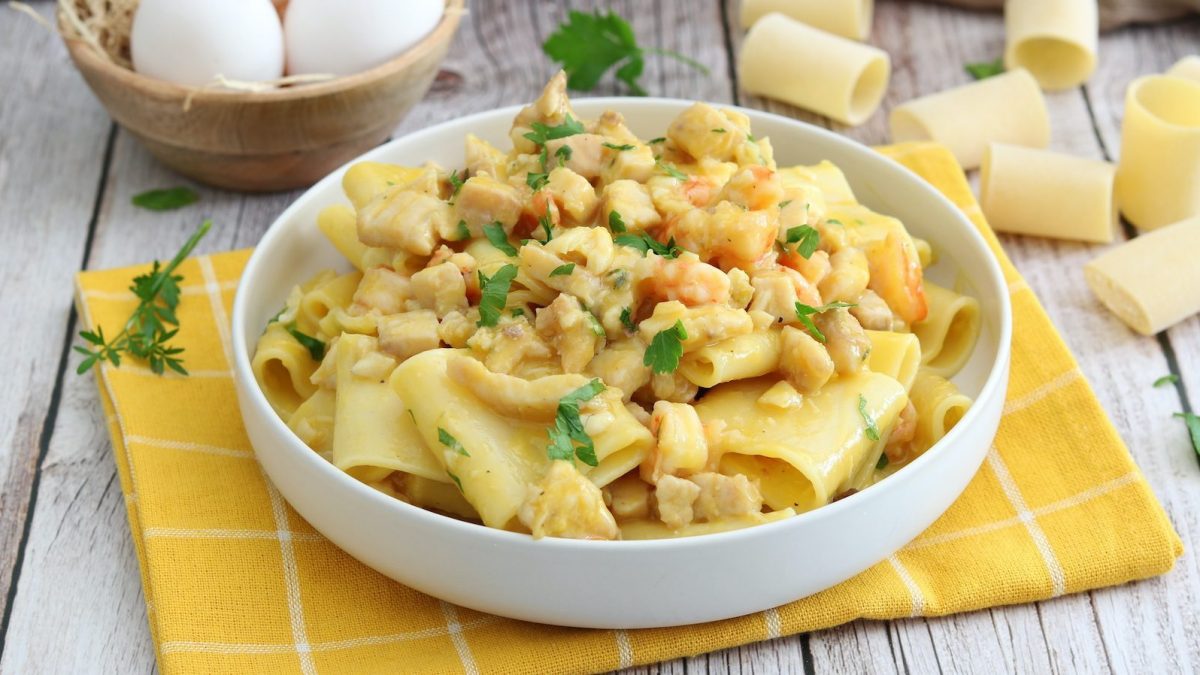
Seafood Carbonara is an original and tasty main dish, made with swordfish, shrimp and sea bream instead of the bacon called for in the classic recipe. The fish, cut into pieces, is flavoured in a pan, blended with white wine and combined with a cream of eggs, egg yolks, parmesan and pecorino: for a creamy dish, ideal for Sunday lunch or a dinner with friends, that will win over even the most skeptical guest.
What is Seafood Carbonara?
Seafood carbonara, or "carbonara di mare," is a modern variation of the classic Italian carbonara. While traditional carbonara is made with guanciale (pork cheek), eggs, and Pecorino Romano, seafood carbonara replaces the pork with seafood like shrimp, scallops, or squid. This adaptation is thought to have emerged in the coastal regions of Italy, where fresh seafood is abundant and the local cuisine often merges with traditional dishes.
Seafood carbonara made its way to the U.S. with the growing popularity of Italian-American cuisine in the 20th century. As Italian immigrants brought their culinary traditions to America, new variations of traditional recipes began to emerge to cater to local tastes and ingredients. In particular, seafood carbonara became popular in coastal cities such as New York and Boston, where seafood was more accessible. Over time, it became a beloved dish in Italian restaurants across the country, combining the rich, creamy texture of carbonara with the fresh, delicate flavors of seafood.
Pro Tips for The Best Seafood Carbonara
- Seafood cooks quickly, so be sure to avoid overcooking. Shrimp should turn pink, swordfish should be firm but moist, and sea bream should flake easily. Overcooked seafood can become tough and rubbery.
- When seasoning your seafood, use salt, pepper, and perhaps a pinch of crushed red pepper flakes. The seafood should shine through without being overwhelmed by too much seasoning.
- To achieve the creamy texture of carbonara, be sure to temper the eggs and cheese mixture with some of the hot pasta cooking water. This will prevent the eggs from scrambling when added to the dish.
- The carbonara sauce should have a silky, rich consistency. Use a good amount of Pecorino Romano cheese and a bit of Parmesan for a balanced flavor. Adjust the amount of pasta water as needed to get the right texture.
- A hint of lemon zest or a squeeze of fresh lemon juice can brighten the dish and complement the seafood flavors without overpowering the creamy sauce.
- When combining the seafood and pasta with the egg mixture, keep the heat low to avoid scrambling the eggs. The sauce should be creamy and smooth, not curdled.
- Seafood carbonara is best enjoyed immediately while it's fresh and warm. The sauce can seize up as it cools, so serve it right away to maintain its creamy texture.
Can I Use Other Types of Fish in Seafood Carbonara?
If you like, you can also add other fish species: salmon or tuna slices, but also mussels, clams, calamari… the important thing is that they are very fresh, with a good salty smell and, in any case, perfectly cleaned.
What Else Can I Add to This Seafood Carbonara?
In addition to seafood, you can enhance the flavor of your seafood carbonara by adding ingredients like garlic, shallots, or a dash of white wine for depth. Fresh herbs such as basil or parsley can bring a fresh, vibrant note, while a sprinkle of chili flakes can add a subtle heat. For a richer flavor, consider incorporating a small amount of smoked paprika or a hint of saffron, which pairs well with seafood and adds a luxurious touch.
Can I Use a Different Type of Pasta?
As for pasta, we chose paccheri, a traditional Neapolitan pasta shape that goes well with the consistency of the fish and the richness of the sauce, but you can also opt for mezze maniche rigate, spaghetti or tonnarelli.
Can I Make It Ahead of Time?
While seafood carbonara is best served fresh to maintain its creamy texture and delicate flavors, you can make parts of the dish ahead of time. You can cook the seafood, prepare the pasta, and even make the egg and cheese sauce in advance. However, once you combine everything, the sauce may not hold up well when reheated. If you need to make it ahead of time, consider storing the components separately and then combining them just before serving.
Does It Freeze Well?
Seafood carbonara doesn’t freeze well, as the creamy sauce can separate and the seafood may become rubbery when reheated. Freezing can cause the eggs and cheese to lose their smooth texture, and the seafood itself may lose its freshness and delicate flavor.
How to Store Any Leftovers
To store leftover seafood carbonara, allow it to cool to room temperature before placing it in an airtight container. Store the container in the refrigerator for up to 1-2 days.
When reheating, do so gently over low heat, adding a splash of water or cream to restore the sauce’s creamy consistency. However, keep in mind that seafood pasta doesn’t hold up as well as other types of dishes, so it’s best to enjoy it fresh when possible.
Ingredients
How to Make Seafood Carbonara
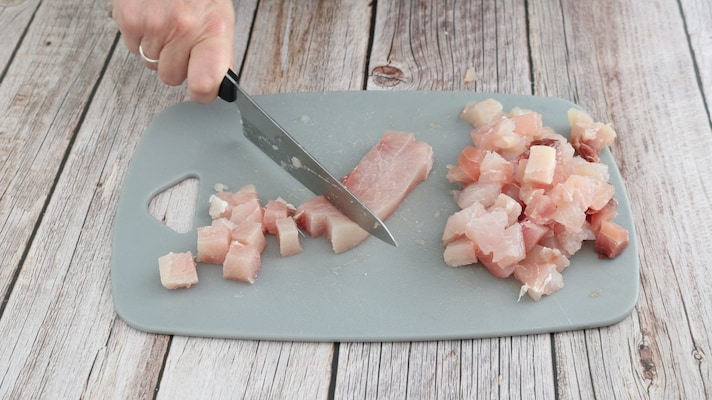
Remove the skin from the swordfish slice, then cut the flesh into small pieces.
Remove the skin from the swordfish slice, then cut the flesh into small pieces.
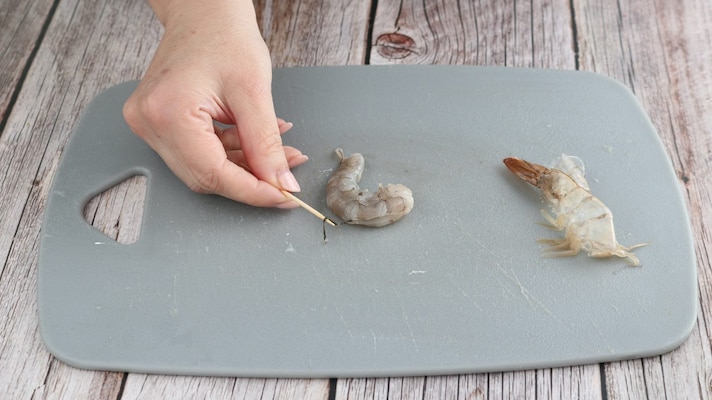
Shell the shrimps, then remove the innards with the help of a wooden toothpick and dice the shellfish.
Shell the shrimps, then remove the innards with the help of a wooden toothpick and dice the shellfish.
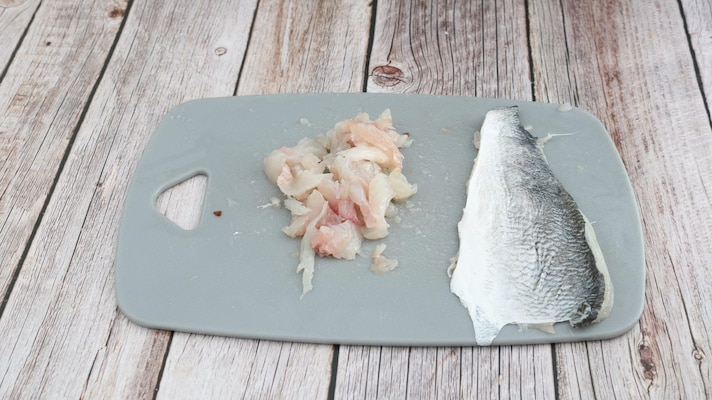
Finally, remove the skin from the sea bream fillet and mince the pulp.
Finally, remove the skin from the sea bream fillet and mince the pulp.
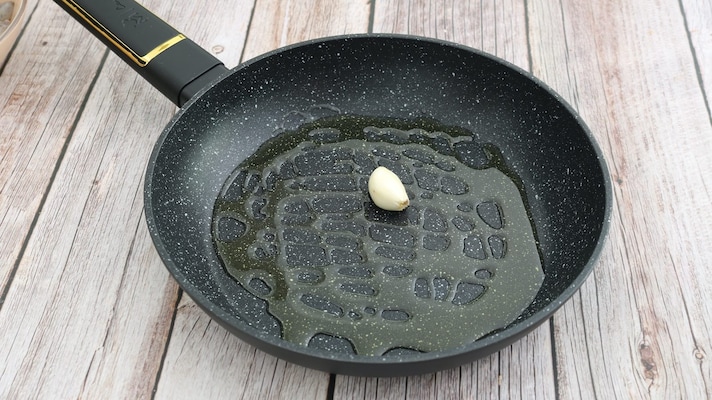
In a large pan, pour the extra virgin olive oil and add a clove of garlic, then let it fry for a few minutes, until golden.
In a large pan, pour the extra virgin olive oil and add a clove of garlic, then let it fry for a few minutes, until golden.
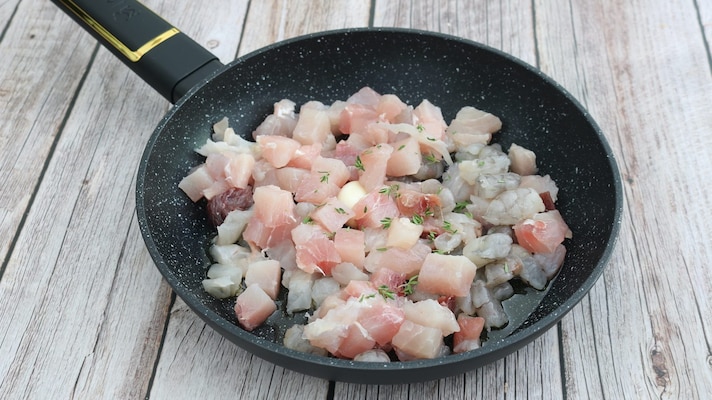
Add the mixed fish and season with thyme leaves.
Add the mixed fish and season with thyme leaves.
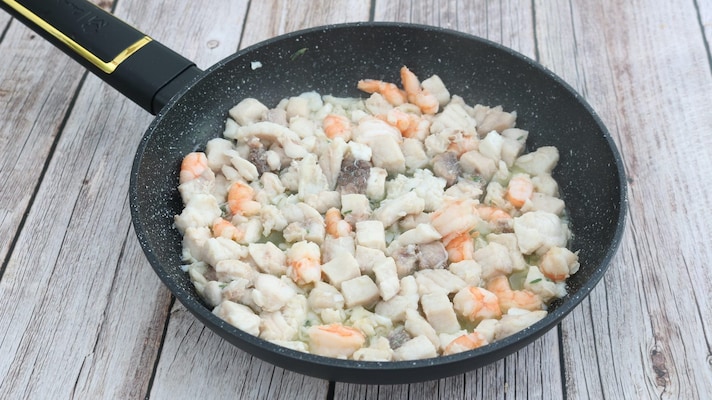
Cook the fish for 3-4 minutes on medium-high heat.
Cook the fish for 3-4 minutes on medium-high heat.
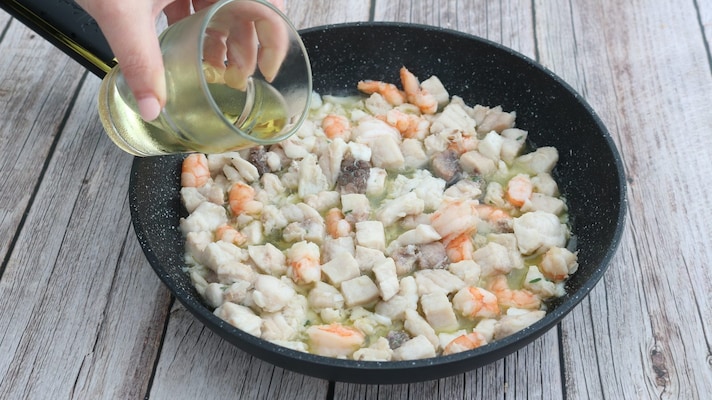
Blend with white wine and let the alcohol evaporate over high heat, then continue cooking for another 7-8 minutes.
Blend with white wine and let the alcohol evaporate over high heat, then continue cooking for another 7-8 minutes.
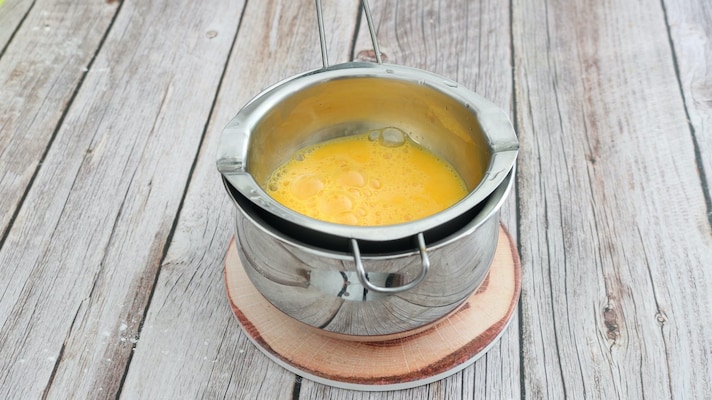
Meanwhile, mix the eggs and yolks vigorously in a bowl and leave them to heat in a bain-marie. Separately, bring plenty of lightly salted water to the boil, then add the chosen pasta shape.
Meanwhile, mix the eggs and yolks vigorously in a bowl and leave them to heat in a bain-marie. Separately, bring plenty of lightly salted water to the boil, then add the chosen pasta shape.
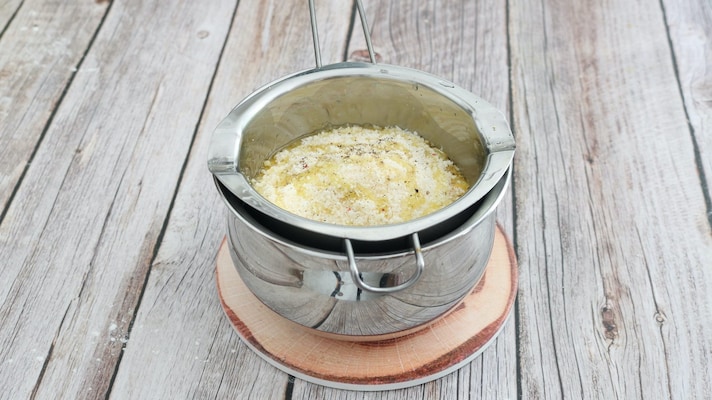
Combine the grated cheeses, extra virgin olive oil, salt and pepper, then mix everything together with a whisk until you get a creamy mixture. If you have a kitchen thermometer, check the temperature: once it reaches 140°F/60°C, remove it from the heat source.
Combine the grated cheeses, extra virgin olive oil, salt and pepper, then mix everything together with a whisk until you get a creamy mixture. If you have a kitchen thermometer, check the temperature: once it reaches 140°F/60°C, remove it from the heat source.
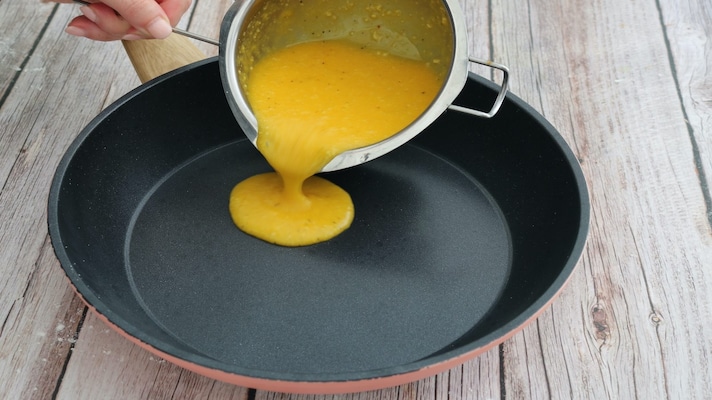
Pour the egg mixture into a large pan.
Pour the egg mixture into a large pan.
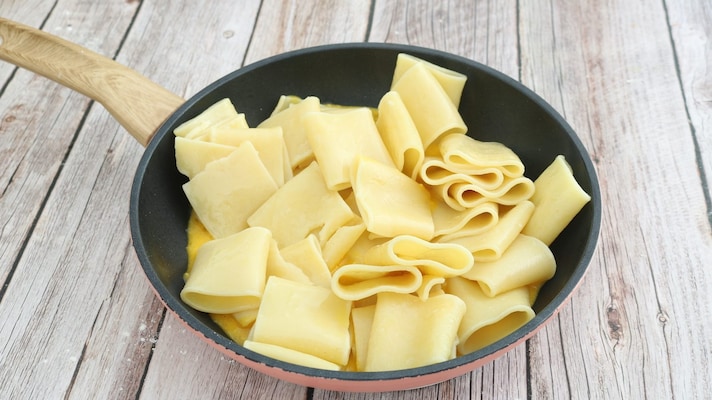
Drain the pasta al dente and transfer it to the pan with the egg cream.
Drain the pasta al dente and transfer it to the pan with the egg cream.
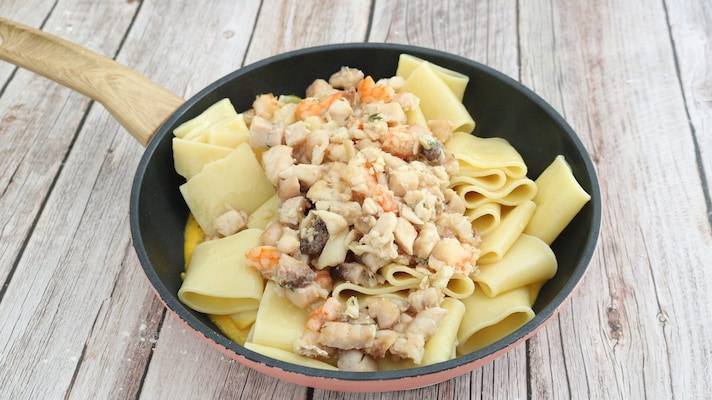
At this point, add the previously cooked fish.
At this point, add the previously cooked fish.
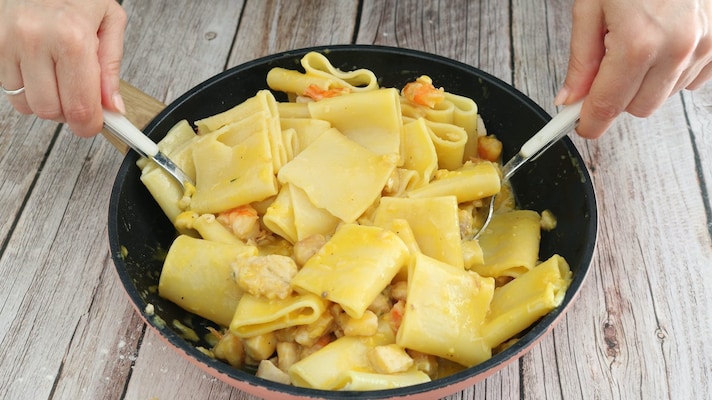
Mix everything together carefully, away from the stove, so as to distribute the seasoning perfectly.
Mix everything together carefully, away from the stove, so as to distribute the seasoning perfectly.
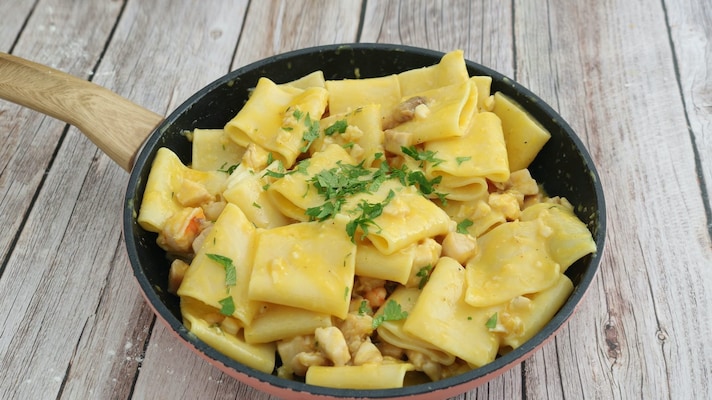
Complete with finely chopped fresh parsley and transfer the dish to individual plates.
Complete with finely chopped fresh parsley and transfer the dish to individual plates.
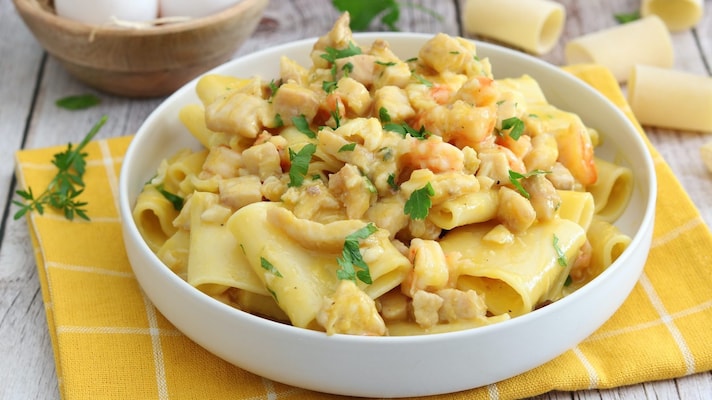
Enjoy it right away, while it's still piping hot!
Enjoy it right away, while it's still piping hot!
;Resize,width=767;)
